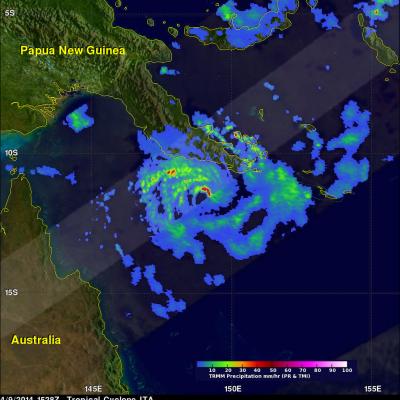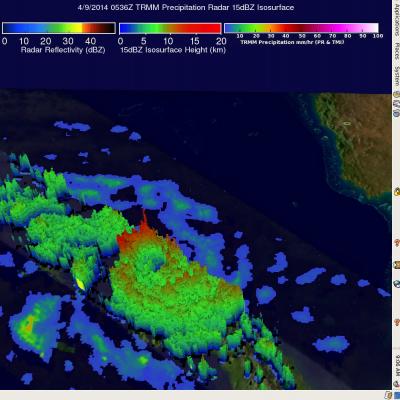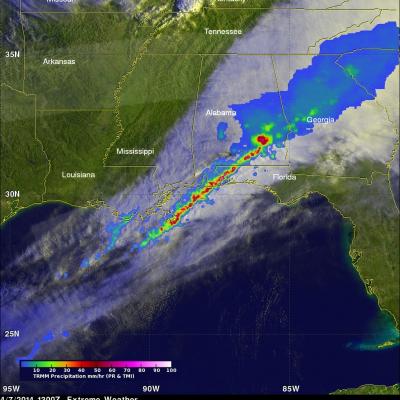TRMM Sees Powerful Tropical Cyclone Ita Approaching Queensland, Australia
Tropical cyclone ITA, located in the Coral Sea northeast of Australia, continues to intensify while heading toward the northeastern coast of Australia. ITA was seen twice by the TRMM satellite on April 9, 2014. The tropical cyclone's wind speeds had increased from 65kts (about 75 mph) with the first pass at 0536 UTC to 80kts (about 92 mph) when viewed again at 1528 UTC. ITA is predicted to continue becoming more powerful and have sustained winds of 135 kts (about 188 mph) before hitting Australia's Queensland coast tomorrow. TRMM's Precipitation Radar (PR) instrument sliced through ITA's eye





